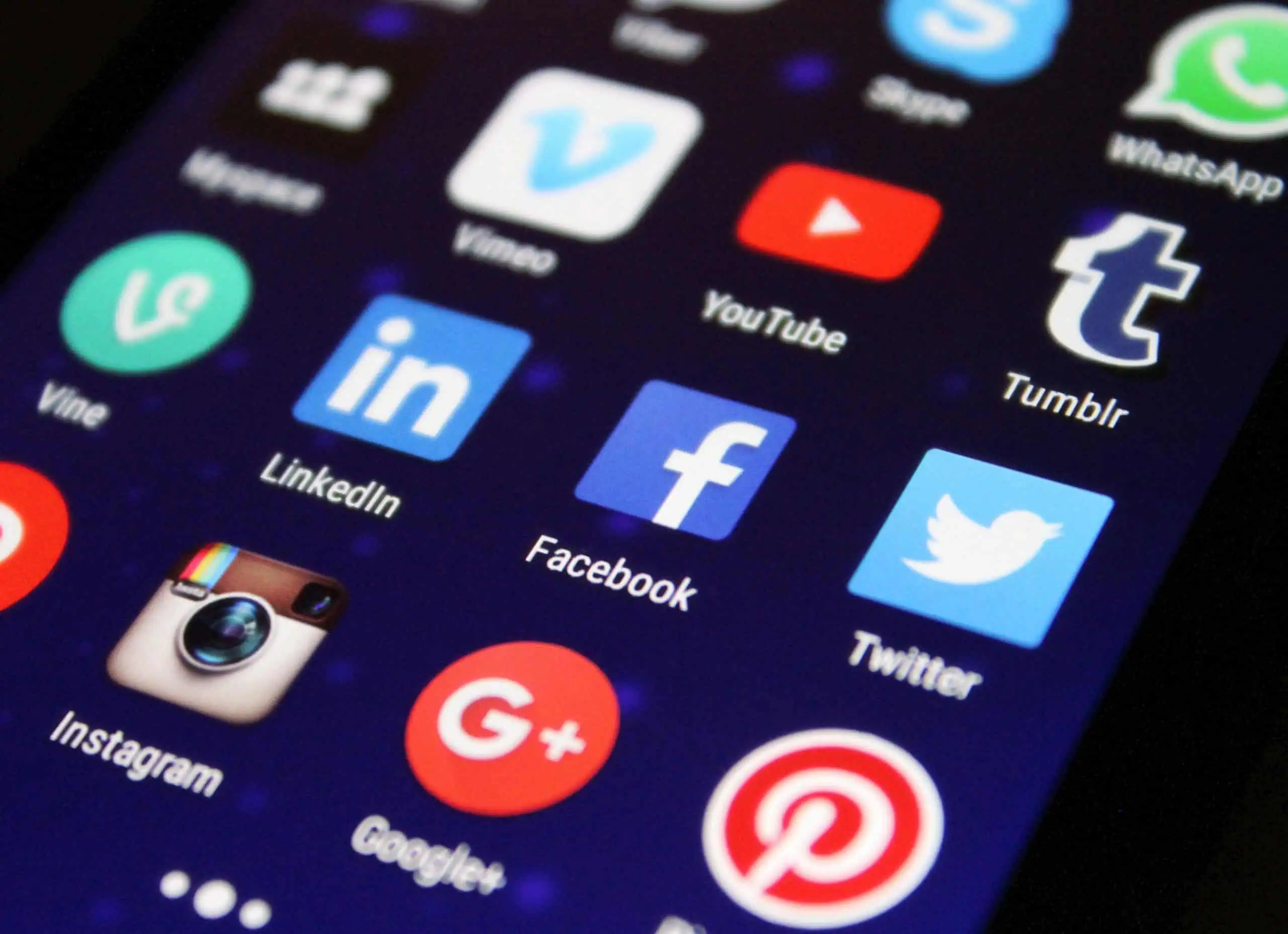Welcome to a pivotal discussion on diversity and inclusion in social media—a guide tailor-made for those just starting their journey in the digital sphere. As the social media landscape continues to evolve, understanding the critical role of diversity and inclusion has never been more important.
This guide explores the essential elements of fostering diverse and inclusive environments online. Whether you are an entry-level job seeker looking to make your mark or want to engage more thoughtfully on social media, the insights here are designed to empower you to contribute positively to digital communities.
By embracing the principles discussed in this guide, you will better appreciate how diverse perspectives can enrich online interactions, drive innovation, and create a more encompassing and respectful digital world. Let’s delve into why diversity and inclusion on social media matter, how to promote them, and the significant benefits they bring to individuals and companies alike.
Understanding Diversity and Inclusion in Social Media
Diversity and inclusion on social media refer to the thoughtful and strategic efforts to represent and engage various cultural, ethnic, and identity groups online. Ensuring diverse voices and perspectives in the digital landscape is crucial for fostering a broader understanding and openness among users worldwide.
The Scope of Diversity and Inclusion
On social media, diversity isn’t only about race and ethnicity. It encompasses a range of factors including:
- Gender and sexual orientation
- Socioeconomic status
- Age and generational influences
- Geographic diversity
- Ability and accessibility issues
How Social Media Platforms Foster Inclusivity
Major social media platforms have implemented policies and tools aimed at enhancing diversity. Features such as automatic subtitles in multiple languages or alt-text for images help create a more accessible environment. Algorithms are increasingly being adjusted to reduce bias and promote content from various sources.
Additionally, resources for immigrants in the U.S. are frequently shared and discussed on social media, creating platforms for advocacy and community building among diverse groups.
The Role of Users in Promoting Diversity
Users play a pivotal role in promoting diversity and inclusion on social media. Through the content they create, share, and engage with, social media users can influence platform cultures significantly:
- By supporting creators from diverse backgrounds
- Participating in or initiating discussions on relevant social issues
- Using inclusive hashtags or supporting movements aiming for social change
When they take action, users directly contribute to a more diverse and vibrant social media ecosystem. Additionally, learning more about the Latino cultural terms glossary can provide deeper insights into the dynamics of cultural diversity on these platforms.
Indeed, understanding diversity and inclusion in social media is not just about recognizing the presence of different groups but also about actively participating and engaging with them in meaningful ways. This engagement helps develop a more inclusive and equitable digital space where everyone’s voice can be heard.
Why Diversity and Inclusion Matter on Social Platforms
Diversity and inclusion are fundamental on social platforms because they ensure that all voices, particularly those from marginalized communities, are heard and respected. This inclusivity enriches the social media experience for all users by providing a broader range of perspectives and fostering a more profound understanding among different groups.
Enhancing User Experience
Diverse content on social platforms can lead to more engaging and relatable user experiences. People feel valued and understood when they see their lives and stories reflected in the media they consume. This connection is crucial for building trust and loyalty with the platform.
Boosting Creativity and Innovation
A diverse environment is a fertile ground for creativity and innovation. Different perspectives lead to unique ideas and solutions, driving the platforms forward and keeping them dynamic and relevant. For instance, cultural celebrations like global cultural festivals in February can inspire thematic content that resonates with a broad audience worldwide.
Empowering Economic Growth
Platforms championing diversity and inclusion can tap into new markets and demographics, leading to economic growth. Advertisers and brands are more likely to invest in platforms that reach a diverse audience, recognizing the potential to connect with a broader customer base.
Furthermore, educational content from reliable sources like College Navigator often gains significant traction on inclusive platforms, driving engagement and informational value.
The commitment to diversity and inclusion on social platforms better represents the global audience and accelerates growth and innovation, making these platforms more vibrant, inclusive, and economically prosperous.
Strategies for Promoting Diversity and Inclusion on Social Media
Several proactive strategies can be implemented to enhance diversity and inclusion on social media platforms. These actions foster a more inclusive atmosphere and ensure that all users feel represented and listened to.
Content Moderation and Guidelines
Establishing clear content guidelines that promote respect and inclusivity is essential. Similarly, effective moderation can prevent hate speech and harassment, ensuring a safe space for all users.
Inclusive Algorithms
Reworking algorithms to promote diverse voice content can significantly increase the visibility of underrepresented groups. This helps reduce bias and gives everyone a fair chance to be heard.
Outreach and Collaboration
Platforms should collaborate with diverse creators and influencers to elevate voices with varied backgrounds. Hosting live discussions, Q&A sessions, and stories from diverse perspectives are effective ways to engage.
User Empowerment
Empowering users to customize their content feeds to include diverse perspectives can enhance their experience. Providing tools that help users report discrimination also ensures community support.
Training and Awareness Programs
Regular staff training sessions on diversity and cultural sensitivity are crucial. These programs ensure that everyone involved in managing and developing social media platforms is informed and conscientious.
Celebrating April cultural celebrations on social media can enlighten users about the richness of diverse cultures, sparking interest and respect across communities.
Overall, these strategies for promoting diversity and inclusion on social media enrich the user experience and contribute to a more just and equitable digital world.
Challenges of Diversity and Inclusion in Social Media
While the efforts to bolster diversity and inclusion on social media are commendable, several challenges persist. Addressing these difficulties is vital to developing genuinely inclusive digital platforms.
Platform Bias
Technical biases in algorithms can inadvertently favor certain groups over others. This issue complicates the discovery and promotion of diverse content, potentially silencing minority voices.
Cultural Misunderstandings
The global nature of social media often leads to misunderstandings and conflicts due to differing cultural contexts. Educating users about the cultural significance of food can be a step towards bridging this gap.
Resistance to Change
Some segments of users and creators resist changes aimed at increasing inclusivity, viewing them as unnecessary or burdensome. Overcoming this resistance requires thoughtful dialogue and education.
Data Privacy Concerns
Inclusivity efforts often require collecting and analyzing demographic data, raising concerns about privacy and data protection among users.
Scaling Inclusive Practices
Scaling up diversity and inclusion practices effectively can be a logistical and resource-intensive challenge as platforms grow.
External educational resources, such as the American Civil Liberties Union, can offer guidance on navigating these complex issues.
Understanding and overcoming these challenges is crucial for advancing diversity and inclusion in the digital sphere. By addressing these issues directly, social media can become a more welcoming and inclusive environment for all users.
Benefits of Embracing Diversity and Inclusion on Social Media
Embracing diversity and inclusion on social media platforms offers significant benefits that extend beyond the digital realm and positively impact society.
Broadened Perspectives
When diverse voices share their stories and opinions, it broadens perspectives for all users. Exposure to different viewpoints fosters understanding and empathy between diverse communities.
Enhanced Creativity
Diverse groups bring unique ideas and creative solutions, enhancing platform content quality and innovation.
Improved Brand Reputation
Companies promoting diversity and inclusion on social channels often see improved brand perception and consumer trust.
Economic Opportunities
Inclusive platforms attract a wider audience, opening up new economic opportunities for businesses and advertisers targeting diverse markets.
Academic studies from sources like Harvard University support the positive outcomes of diversity in digital spaces, linking inclusivity to greater satisfaction and loyalty among users.
Ultimately, the benefits of fostering diversity and inclusion on social media are profound. They promote not just a healthier social environment but also contribute to a more informed, creative, and open society.
Case Studies: Successful Diversity and Inclusion Campaigns
Several notable social media campaigns have effectively highlighted the importance of diversity and inclusion. These initiatives raised awareness and set a standard for other organizations to follow.
#ShareTheMicNow
This campaign involved Black women taking over white women’s Instagram accounts to share their experiences and perspectives. It amplified underrepresented voices, engaging a broad audience.
#LoveHasNoLabels
An initiative by the Ad Council, this campaign used videos to challenge biases and celebrate diversity across race, age, gender, and religion. It went viral, fostering a dialogue about inclusiveness.
#IWeigh
Founded by Jameela Jamil, #IWeigh encourages people to share posts focusing on accomplishments and attributes rather than physical appearance, promoting body positivity and self-acceptance.
Educational resources such as those found in the ACLU’s racial justice programs can bolster the impact of these campaigns. These tools provide valuable support for understanding and advancing diversity and inclusion in all aspects of society, including social media.
Each case study exemplifies how thoughtfully crafted messages promoting diversity and inclusion on social media can inspire change and foster a more inclusive society. This approach enhances the user experience and supports the broader goals of social equality and respect.
Tools and Resources for Diversity and Inclusion on Social Media
Enhancing diversity and inclusion on social media platforms requires access to practical tools and resources. These aids support the creation and maintenance of inclusive spaces online.
Platform-Specific Accessibility Features
Major social media platforms now incorporate features that make their sites accessible to more users. These include text-to-speech, alt text for images, and customization options for color contrast and text size.
Analytics Tools
Analytics tools enable content creators to understand the diversity of their audience. The insights gained can guide the creation of content that resonates with a varied audience, promoting inclusivity.
Educational Resources
Online courses and workshops on diversity training help content creators and social media managers foster inclusive environments. Websites like edX offer courses that teach strategies for promoting diversity in digital spaces.
By utilizing these tools and resources, individuals and companies can significantly improve their efforts toward fostering an inclusive, supportive, and accessible social media landscape. This commitment enhances the user experience and enriches the virtual community, promoting a global understanding and respect for diversity.
FAQs
Questions often arise when discussing diversity and inclusion on social media. To provide more precise insights, here are some frequently asked questions and their answers.
What is diversity and inclusion in social media?
Diversity refers to representing various identities and experiences in digital content, while inclusion is actively engaging and valuing these diverse perspectives.
Why are diversity and inclusion important for social media platforms?
They enhance user engagement, promote creativity, and improve problem-solving by incorporating various viewpoints.
How can users contribute to diversity and inclusion on social media?
By supporting content from diverse creators, we participate in inclusive campaigns and use inclusive language in communications.
What challenges might arise in promoting diversity and inclusion?
Issues can include user resistance, algorithmic biases, and difficulties scaling inclusive initiatives as platforms grow.
Are there tools to help promote diversity on social media?
Yes, analytics tools, accessibility features, and educational resources are available on various platforms to support diversity and inclusion initiatives.
Conclusion
As we’ve explored throughout this article, diversity and inclusion in social media are pivotal for creating engaging, innovative, and equitable platforms that reflect our diverse world. By prioritizing these elements, social media can be a powerful tool for positive social change, connecting diverse communities and fostering a more profound understanding of cultural divides.
Implementing effective strategies for diversity and inclusion, addressing challenges, and leveraging the benefits are essential steps toward cultivating an inclusive digital environment. Everyone—from job listing websites and platform developers to diversity champions and everyday users—has a role to play in ensuring that social media remains a space where all voices can be heard and valued.
Join the Movement
To actively participate in shaping an inclusive digital future, consider joining a community committed to diversity and inclusion. Join Diversity Employment to connect with like-minded individuals, access resources, and contribute to a world where every social media interaction counts towards building an inclusive society. Your voice and actions can make a difference. Let’s work together to ensure social media is a tool for inclusivity and positive change.




